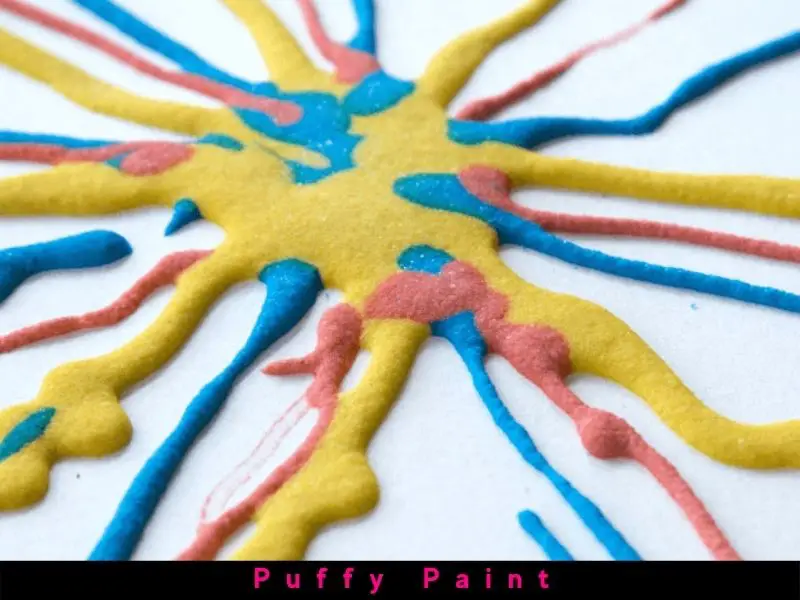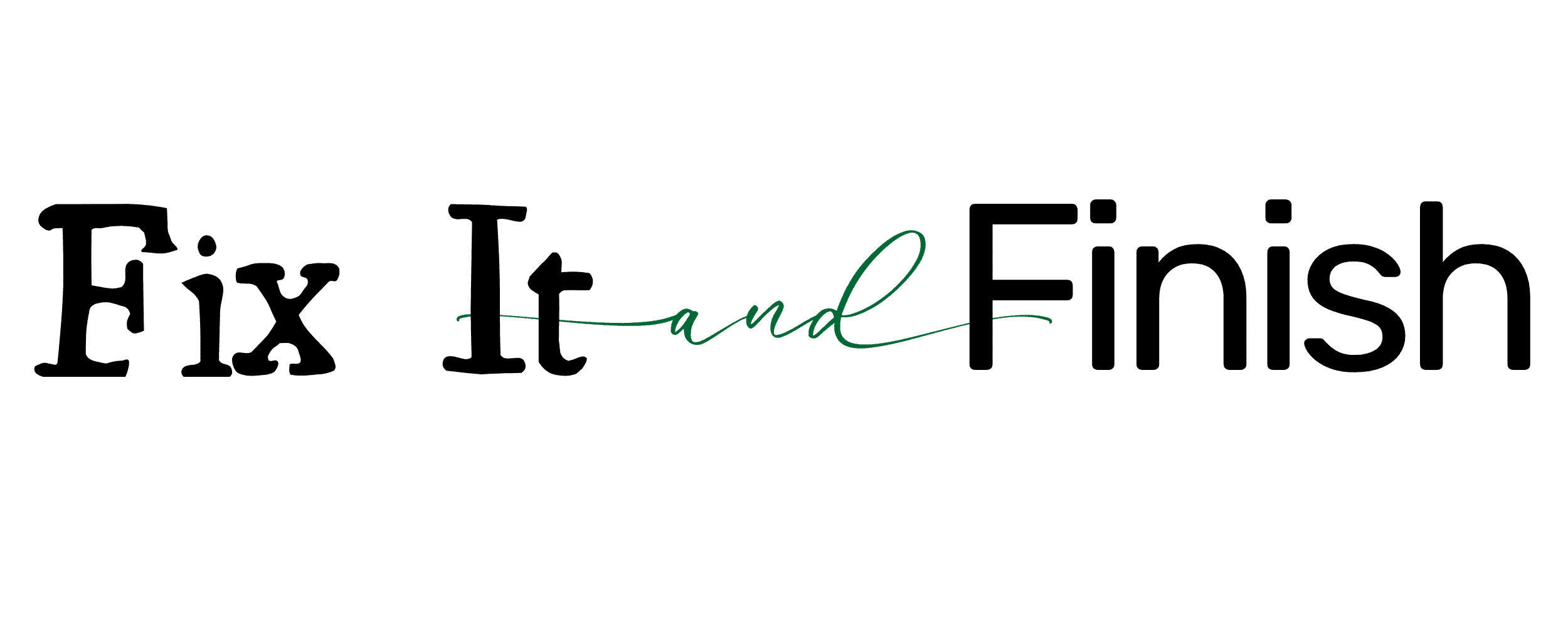What is Puffy Paint? Uses + How to Make It
Growing up in the ’80s and d90’s was fun and especially when it came to decorating wardrobes. If you grew up in those times, you probably understand how fun it was to make puffy paint designs and patterns on wardrobes and room walls. Funny enough, what we always called puffy paint it’s not puffy at all. It’s called puffy because it resembles a raised puff but it’s rock hard when dry.
So what exactly is this puffy paint?
What is puffy paint?
It’s comprised of flour and glue and hardens to a rock-like consistency. Yes, it has been raised. It’s also a lot of fun to produce and design with. However, puffy may be an overstatement.
When squirted out of the container, puffy paint seems like acrylic craft paint, but as it dries, it expands and puffs up, giving the lines of paint a cloud-like appearance. Puffy paint bottles with narrow tips are made to make tiny lines so you can easily write words or draw outlines. Puff paint can stick to paper, glass, fabric, and wood depending on the formula.
Uses of Puffy Paint

Puffy Paint is the only 3D paint you’ll ever require. Whether you’re the next Picasso or just really adept at generating interesting splashes of color, this nontoxic multi-surface paint works permanently on just about everything. It’s the pinnacle of 3D paint.
When you think about Puffy Paint, you might recall designing your t-shirt in the 1980s or early 1990s. While puffy paint has made a resurgence in the crafts world, its uses have expanded significantly. Some of the common uses of puffy paint include the following.
Making Homemade Stamps
Did you know that you can make a customized stamp using puffy paint? As mentioned earlier, puffy gets as hard as a rock when dry. So all you need to have is a piece of a wooden craft block. Paint your stamp design on the surface of the block and leave it to dry up. Alternatively, you can use a bottle cap or a wine cork for a small stamp design.
Making Window Clings
There’s nothing more entertaining than these window decals! All you’ll need is some parchment paper to get started. Draw your design on the paper with puffy paint, then peel it off after a couple of hours. These decals can be applied to windows, cars, and even bathtubs.
Making Designs on Clothes
Making designs on clothes might be quite easier with puffy paint. It sounds a bit old-fashioned but things turn great deepening on the design you pick. All you need to do is to pick a relevant design and gently draw it on your cloth. It has been done and it’s being done.
Decorating Halloween Pumpkins
As mentioned earlier, puffy paint can be used on almost all surfaces regardless of the texture. This makes it suitable to be used for making designs on Halloween pumpkins. The good thing with puffy paints is that once sprayed or squirted, they live raised puffs that harden up when they dry.
Making Hobnail Glasses
Hobnail glasses (glassware with unique bumps on the surface) are fantastic pieces to any kitchen! You may make your own by using a piece of tape to guide you along the side of any glass or jar. For a clean, straight line, dot your puffy paint down the edge of the tape. Then spray paint the glasses for a stunning DIY project!
Making Prints on Easter Eggs
Have you seen those Easter eggs and how beautiful they look with the writings on them? It’s amazing. Puff paint makes it [possible to make the raised letters so that they appear in a 3-dimensional appearance.
Best for kid’s painting
If your kids are just learning to paint, puffy paint is the best to work with. However, it’s recommended that the kids use homemade puff paint. This is because it’s non-toxic and hence safe for the little ones.
Can be used to make wall paintings
Homemade puff paints are the best for making paintings around your wall. Note that you can mix several colors when making the puff paint. Multiple colors give paintings a more beautiful appearance.
How do you make puffy paint?
One of the most interesting facts about puffy paint is that you can make it by yourself. If you are looking forward to making your puffy paint, below is a simple process to follow.
Before you get to the process, you need to know exactly what you need to make the puffy paint at home. You need to have the following material available to make some good puffy paint.
- Clean flour: ¼ cup or more depending on the quantity of paint you need.
- Food colors: This will entirely depend on the color you need your paint to have
- White Glue: At least ¼ cup or more depending on the amount of paint you need to make. However, make sure you work with the right consistency.
- Shaving Cream: ¾ cup or more depending on the consistency you are working with.
Here’s a step-by-step procedure for making puffy paint
- Mix shaving cream with the white glue: Using a clean bowl, first mix shaving cream with white glue. Make sure you use equal measures of the two to maintain the right consistency.
- Add flour: Depending on the amount and consistency you need your paint to have, add a proportional amount of flour to the mixture and stir thoroughly.
- Add food coloring of your choice: With a complete mixture of shaving cream and white glue, now add at least five drops of food coloring to the mixture.
- Paint your designs: Once you are sure the mixture is ready for use, you can start making your puffy paint designs.
Does puffy paint peel off the glass?
Glass is one of the most difficult surfaces to paint. However, with the right kind of paint, things might be a little bit different. Puffy paint is multi-surface paint that can stick on nearly all surfaces.
Glass is soft and puffy paint might shrink (or rather peel off) when dry. However, this can be evaded by making sure that you apply a little more paint on the glass surface. Also, adding some more office glue could enhance the adhesiveness of the paint.
Can you use puffy paint on wood?
The answer is definitely yes! It’s a multi-surface paint and using it on wood will be much easier actually than on other stubborn surfaces. Puffy paint looks beautiful on wood. That’s why it was mostly used in the 80s and 90s by kids to paint pattern son wardrobes and beds.
Wood has a rough texture and perfectly absorbs paint thus making it the best surface to use puffy paint on.
If drawing 3D patterns and designs is your passion, then you need to embrace the use of puffy paint. It’s the best that you can use for such paints and patterns. Unlike the two-dimensional paints out there, the puffy paint is quite outstanding with its 3-dimensional appearance. This makes it the best choice for making décor patterns around your home. Above all, you can easily make your homemade puff paint which is non-toxic.
